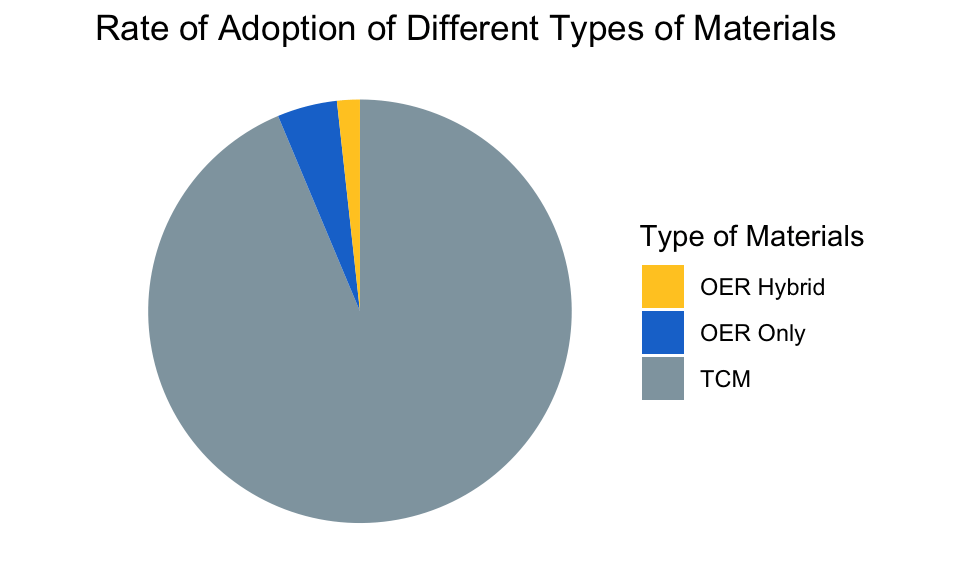At the OpenEd Conference in 2013, Nicole Allen and I challenged the OER community to save students one billion dollars. Five years later, SPARC have collected a significant amount of data in order to answer the question of whether or not we have achieved that goal. You can read more about the data collection methodology and their ongoing work on this question here. SPARC have made the data available under the CC0 dedication and you can download them here.
As a brief summary, part of the data collection involved sampling the prices for required course materials across a range of material formats, including new print, used print, print rental, digital rental, and loose-leaf. SPARC started with a stratified sample of 120 US post-secondary institutions. Then, working from a pool of 20 courses for which adoptable OER exist, they randomly selected five courses to examine at each institution and collected pricing information for all available formats from each campus’ online bookstore. Quite the task!
Below I present the results of some exploratory data analysis intended to answer basic questions. In this post I’ll “stick to the facts,” providing color commentary in a later post. (The source code used to perform the EDA below is also available for download here and released under CC0.)
The tl;dr
- The overall average price for “Traditionally Copyrighted Materials” (TCM), defined as the price halfway between the highest cost option (e.g., new print) and the lowest cost option (e.g., a digital rental), is $134.26.
- The overall average price for “OER Only” (Open Educational Resources in all formats, including new print, used print, rental, loose-leaf, and digital) is $10.69.
- The overall average price for “OER Hybrid” (Open Educational Resources in all formats, paired with a homework system, personalized learning platform, or other value-added service) is $34.71.
- The overall average price for all OER (both OER Only and OER Hybrid) is $17.32.
- Average student savings from OER, calculated as the overall average price for TCM minus the overall average price for all OER, is $116.94.
- The adoption rate of OER in these 20 courses for which good OER exist is 6.3%.
Exploratory Data Analysis
What types of institutions are represented in the data, and how many of each type are there?

Across all available course materials formats, how do the average prices of the most expensive options and least expensive options vary across type of institution?

Across all available course materials formats, how do the average prices of the most expensive options and least expensive options vary across courses?

How do the average prices of the most expensive options and least expensive options vary across TCM, OER Only, and OER Hybrid?

If we take the midpoint between the most expensive option and least expensive option as the “overall average price”, what is the overall average price for each type of required course material?

How much money do students save when their faculty adopt OER? We can calculate student savings with OER by starting with the overall average price of TCM and subtracting each of the overall average prices of OER in turn.

What is the rate of OER adoption in the data set?

| Type of Materials | Adoption Rate |
|---|---|
| TCM | 93.68% |
| OER Only | 4.58% |
| OER Hybrid | 1.74% |
Comments are closed.